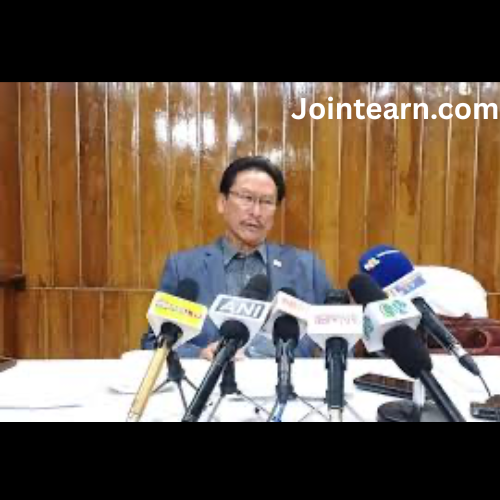Gaya, Bihar: The first phase of the 2025 Bihar Assembly elections witnessed a historic voter turnout, prompting political strategist Prashant Kishor to assert that “change is coming” to the state. Speaking to ANI on Thursday, Kishor, founder of the Jan Suraaj initiative, emphasized that the unprecedented engagement of voters across Bihar signals a shift in the political landscape. “The highest polling in the last 30 years indicates that change is coming to Bihar. A new system is going to be established on the 14th of November,” he remarked, referring to the day when vote counting is scheduled to reveal the state’s new political direction.
Bihar Chief Electoral Officer Vinod Gunjyal confirmed that the first phase of polling concluded peacefully, with a voter turnout of approximately 64.46 percent. According to Election Commission data, this marks the highest turnout in Bihar since the 2000 assembly elections, which recorded a turnout of 62.57 percent. Of the state’s 45,341 polling booths, data from 41,943 booths contributed to this figure, with final numbers expected to be released after the completion of the second phase of voting.
The first phase of voting covered constituencies across both urban and rural Bihar, with 8,608 polling booths located in cities and 36,733 in rural areas. A total of 3.75 crore voters were eligible to participate in the first phase, comprising 1.98 crore men and 1.76 crore women. The participation of women voters was notably high, with many casting their votes enthusiastically, reflecting increasing political engagement among female citizens in the state.
Senior citizens also made their presence felt at the polls, with over two lakh voters aged 85 and above exercising their franchise. This demographic, often regarded as highly influential in Bihar’s political dynamics, underscored the broad-based participation witnessed in the first phase. The diversity of voters, spanning age, gender, and urban-rural divides, has been interpreted by analysts as a positive indicator for the health of democracy in the state.
In the first phase, 1,314 candidates contested the assembly elections, including 1,192 men and 122 women. The elections were conducted using 47,263 ballot units, along with 45,341 control units and VVPAT machines each. During polling, 165 ballot units, 169 control units, and 480 VVPATs were replaced to address technical issues, accounting for 1.21 percent of the total EVMs used. Comparatively, 1.87 percent of EVMs required replacement during the 2020 assembly elections, indicating a marked improvement in equipment performance and polling efficiency.
CEO Gunjyal stated that all complaints registered on polling day were addressed promptly. A total of 143 complaints were received, all of which were resolved in a timely manner. Additionally, several instances of reported boycotts at select polling stations—such as stations in Brahmapur constituency of Buxar district, Fatuha constituency, and Suryagarha near Lakhisarai—were promptly investigated and managed. “No untoward incidents have been reported in the first phase of voting that concluded today. Voting was conducted peacefully and smoothly,” he added, highlighting the administration’s efforts to maintain a secure and orderly polling process.
The significant voter turnout in the first phase has been widely interpreted as a sign of heightened political awareness and engagement in Bihar. Experts suggest that this surge reflects citizens’ desire for accountability, effective governance, and a departure from entrenched political practices. In particular, young and first-time voters, along with women and senior citizens, appear to have contributed substantially to the robust turnout, signaling a shift in electoral behavior that could shape the outcome in the second phase of voting.
Prashant Kishor’s remarks regarding change resonate with broader expectations of political transformation in Bihar. Over the last three decades, the state has witnessed periods of political instability, coalition governments, and shifting voter loyalties. Analysts argue that high voter participation can serve as a catalyst for systemic change, compelling political parties to adopt policies that are more responsive to public needs and aspirations. Kishor, known for his strategic interventions in multiple state elections across India, interprets the current scenario as indicative of a decisive shift toward accountability and reform.
The logistical management of the first phase was noteworthy. The Election Commission ensured the smooth deployment of polling personnel, security arrangements, and technical equipment. Ballot units and VVPAT machines were tested and monitored rigorously, with replacements conducted swiftly to prevent disruption. Authorities also coordinated with local administration to maintain law and order, ensuring that voters could exercise their rights without fear or obstruction.
With the first phase successfully concluded, the second phase of polling is scheduled for November 11, covering the remaining 122 constituencies in the state. The comprehensive electoral exercise, conducted in two phases, is expected to provide a complete picture of voter sentiment and regional political trends across Bihar. Counting of votes for both phases is set to take place on November 14, a date that Kishor referenced when discussing the “new system” anticipated to emerge from this electoral process.
Political observers note that Bihar’s electoral landscape has evolved significantly, with greater emphasis on technology, voter awareness campaigns, and citizen participation. Initiatives such as extensive voter education drives, digital outreach, and improved polling infrastructure have contributed to the record turnout. In addition, social factors, including rising literacy rates, increasing urbanization, and widespread access to information, have empowered voters to make informed choices.
The unprecedented voter turnout also underscores the growing role of women in Bihar’s political process. For years, female voter participation lagged behind male engagement, but recent elections have witnessed a narrowing of this gap. The first-phase data, showing enthusiastic participation by women voters, highlights the potential influence of women on electoral outcomes, particularly in constituencies where gender-sensitive issues are prominent.
From a strategic perspective, the high turnout could signal a shift in voter expectations, compelling parties to focus on development, social welfare, employment generation, and governance reforms. Analysts believe that political actors in Bihar must now contend with an electorate that is increasingly assertive, well-informed, and willing to challenge traditional power structures. Kishor’s assertion that “change is coming” reflects this evolving political consciousness and the potential for transformative outcomes in the state assembly.
As Bihar prepares for the second phase of voting, attention will turn to the distribution of voter turnout across districts, the impact of local issues, and the role of regional alliances. The state’s political parties are expected to recalibrate their strategies in response to the first-phase results, aiming to mobilize support, address voter concerns, and ensure effective outreach in both rural and urban constituencies.
In conclusion, the first phase of Bihar’s 2025 Assembly elections has set the stage for a potentially transformative political moment. With a record voter turnout of 64.46 percent—the highest in over three decades—the elections reflect an engaged electorate determined to participate actively in shaping the state’s governance. Prashant Kishor’s comments encapsulate the optimism and anticipation surrounding this electoral exercise, suggesting that the people of Bihar are poised for significant political change. As the second phase of voting approaches on November 11, all eyes will be on voter participation and the emerging trends that may redefine Bihar’s political landscape on November 14, when the new assembly is expected to take shape.


Leave a Reply